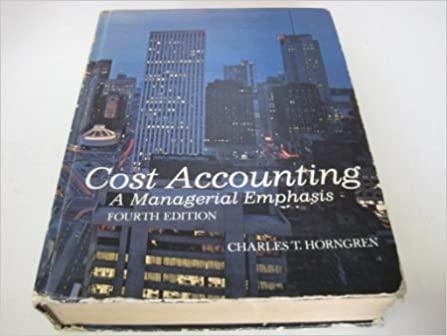Different Approaches to Capital Budgeting; Proper Investment Base The Ruth Company has been operating a small lunch
Question:
Different Approaches to Capital Budgeting; Proper Investment Base The Ruth Company has been operating a small lunch counter for the convenience of employees. The counter occupies space that is not needed for any other busi- ness purpose. The lunch counter has been managed by a part-time employee whose annual salary is $3,000. Yearly operations have consistently shown a loss as follows:
Receipts $20,000 Expenses for food, supplies (in cash) $19,000 Salary . 3,000 22,000 Net loss $ (2,000)
A company has offered to sell Ruth automatic vending machines for a total cost of $13,000 cash. Old equipment now used in the lunch-counter operation is carried at zero book value; it could be sold outright for $1,000 cash. Sales terms are cash on delivery. The old equipment will have zero disposal value ten years from now.
The predicted useful life of the equipment is ten years, with zero scrap value. The equipment will easily serve the same volume that the lunch counter handled. A catering company will completely service and supply the machines. Prices and variety of food and drink will be the same as those that prevailed for the lunch counter. The catering company will pay 5 percent of gross receipts to the Ruth Company and will bear all costs of foods, repairs, and so forth. The part-time employee will be discharged. Thus, Ruth’s only cost will be the initial outlay for the machines.
Consider only the two alternatives mentioned.
. Prospective annual income statement under new plan. What is the annual income difference between alternatives?
. Compute the payback period.
. Compute:
a. Present value under discounted cash-flow method if relevant cost of company capital is 20 percent.
b. Rate of return under discounted cash-flow method.
. Compute the payback reciprocal. Compare your answer with the result in 3(b).
. Management is very uncertain about the prospective revenue from the vending equipment. Suppose that the gross receipts amounted to $14,000 instead of $20,000. Repeat the computation in part 3(a).
. What would be the minimum amount of annual gross receipts from the vending equipment that would justify making the investment? Show computations.
7. What other considerations may influence the decision? L01
Step by Step Answer:






